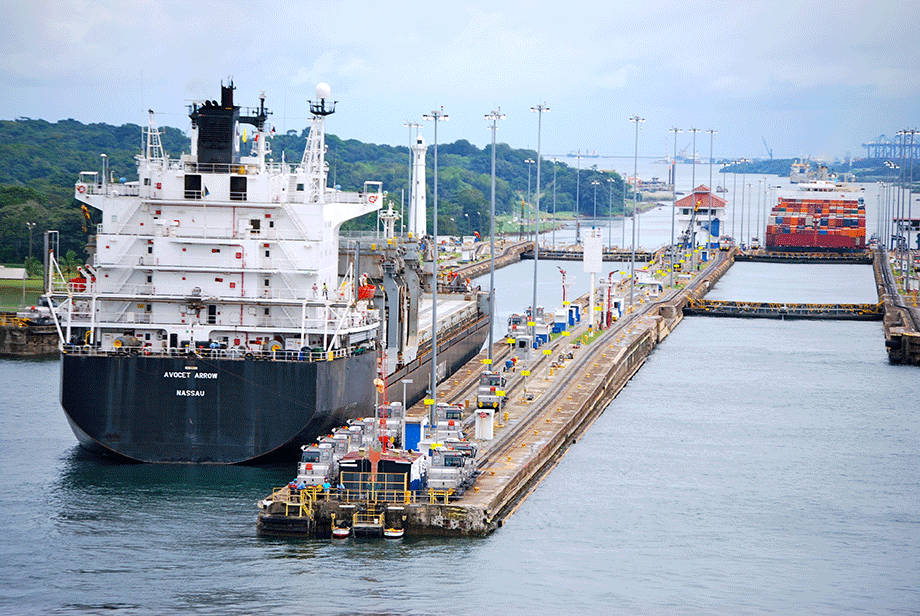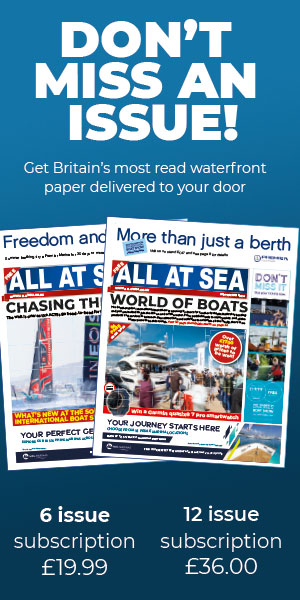The worst drought for 70 years has hit the Panama Canal, forcing today’s strict new regulations that slash the capacity of some containerships by 40 per cent. New surcharges, rising costs and increasing bottlenecks will likely increase the price of UK-US goods, warns the international delivery expert ParcelHero.
The Panama Canal, a vital trade route linking the Atlantic and the Pacific, is running low on water. The Panama Canal Company says it has been hit by the worst drought since 1950. As a result, it’s imposing strict new restrictions on vessels using the canal.
The amount of containers and commodities ships can carry on the canal will be reduced. Normally, when there is plenty of water, the maximum draught limit for ships using the canal is 50ft (15.24m). Because of the drought, the canal is already operating a maximum draught of 44.5ft (13.56m) but, from today, the limit is being slashed to 44ft (13.41m). ParcelHero says this will hit UK-US container traffic, as goods travelling between the US West Coast and Europe must use either the 48-mile (77km) long canal or take the notorious and lengthy alternative route around Cape Horn.
ParcelHero’s Head of Consumer Research, David Jinks M.I.L.T., who is a former Editor of ‘Lloyds Shipping Index’, says: ‘The drastic new draught restrictions will reduce the volume of cargo that the largest, “neo-panamax”, container vessels can carry through this key waterway by up to 40%. That means cargo will have to be distributed among more ships, and that comes at a cost. Already, several carriers using this route have hoisted their rates by between $300-500 per container to cover their increased costs. Ultimately, that means a spike in the price of consumer and industrial goods.
‘And the bad news doesn’t stop there. The Panamanian Government has declared a climate emergency. Water levels there could fall to 78.2ft by late July, overtaking all previous records. If that happens, the Panama Canal Company says it will have to limit the daily number of vessels using the route from 36 to as few as 28. It requires 200 million litres of water to flow down tiered locks into the sea to allow the passage of a single vessel along the canal. Water that is largely generated from Lake Gatun in the centre of the waterway, which is drying-up fast. With this in mind, it’s expected that the maximum authorised draught will be reduced still further, to 43.5ft (13.26m) on 25 June.
‘It’s the largest, neo-panamax container ships that will be among the most impacted, as they now face tough restrictions on draught limits using the locks. Last month, nine of these vessels (around 27% of all transits) used the canal daily. The canal was only uprated to receive these large new ships in 2016. The first such vessel to transit the canal and arrive in the UK, MSC’s 8,800 TEU “Sofia Celeste”, arrived at Tilbury Docks in August 2016. The huge containership was the first of the new class of vessels connecting the West Coast of South America, the East Coast of North America and Northwest Europe. Reducing these loads or switching to smaller vessels will increase costs significantly.
‘So what will the impact be on British importers, exporters and, ultimately, shoppers? Well, goods shipped from the UK to the US West Coast and onwards to the West Coast of South America will see higher charges, which British exporters will have to swallow. Likewise, products destined for the UK from the US will see an equivalent spike in price as bottlenecks and less economic sailings take their toll.
‘Goods imported directly from Asia, including China and Japan, to the UK won’t be immediately impacted. They take a different route, via the Suez Canal, which is not experiencing any restrictions. In contrast, the Panama Canal is the main route for goods to the US East Coast from Asia. That means rising costs will hit any products that originate in Asia, or goods with components made in Asia, that US companies then sell to the UK.
‘The problems are unlikely to significantly impact courier and express parcel deliveries to and from the US West Coast. These are usually air freighted, bypassing the Panama problem. It will mostly be larger, heavier goods, which cannot be airfreighted, that will be hit by new fees. However, be aware of a potential impact of the restrictions on budget, low urgency “surface mail”, as freight companies term mail transported by land and sea. We do advise everyone sending items to the US to regularly check ParcelHero’s USA page, which gives full details on any changes in prices, Customs advice, and details about sending food, prohibited items, etc.
‘Finally, there’s one more effect of the Panama Canal drought that could give us all that sinking feeling. The financial news agency Bloomberg warns the ultimate impact of higher shipping rates could be increased inflation for the US economy. That, in turn, would have repercussions for the rest of the world.”














